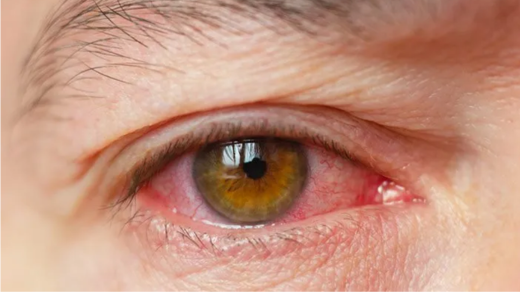Dry eye disease, characterized by insufficient lubrication and moisture on the eye’s surface, is a pervasive and often frustrating condition. Millions worldwide experience the gritty, burning, and sometimes blurry vision associated with it. While over-the-counter eye drops offer temporary relief, the quest for a permanent cure is a common one. While a single magic bullet might not exist for everyone, understanding the underlying causes and adopting a comprehensive approach can significantly alleviate symptoms and, in many cases, lead to long-term comfort and improved eye health.
Unraveling the Roots of Dry Eyes: Identifying the Culprits
Before exploring potential cures, it’s crucial to understand that dry eye is often multifactorial. Identifying the specific contributing factors is the first step towards effective management. Some common causes include:
- Meibomian Gland Dysfunction (MGD): This is a leading cause where the tiny glands in the eyelids that secrete oil (meibum) become blocked or don’t function properly. This disrupts the tear film’s oily outer layer, leading to rapid tear evaporation.
- Reduced Tear Production: Conditions like Sjögren’s syndrome, certain autoimmune diseases, hormonal changes (especially during menopause), and aging can decrease the eye’s ability to produce enough aqueous (watery) tears.
- Increased Tear Evaporation: Besides MGD, factors like infrequent blinking (often associated with prolonged screen use), dry environments (low humidity, air conditioning, heating), and wind exposure can accelerate tear evaporation.
- Medications: Certain medications, including antihistamines, decongestants, beta-blockers, and diuretics, can have dry eye as a side effect.
- Contact Lens Wear: Long-term or improper contact lens use can irritate the eyes and contribute to dryness.
- Eye Surgeries: Refractive surgeries like LASIK can sometimes temporarily or even permanently affect tear production.
- Inflammation: Chronic inflammation of the ocular surface can disrupt tear production and quality.
Beyond Temporary Relief: Strategies for Long-Term Management
While a definitive “cure” in the traditional sense might not always be achievable, especially for conditions like Sjögren’s syndrome, a proactive and consistent approach can significantly improve symptoms and potentially address the root causes, leading to sustained relief.
1. Addressing Meibomian Gland Dysfunction (MGD): The Cornerstone of Treatment
For many, addressing MGD is key to long-term improvement. This involves:
- Warm Compresses: Applying warm compresses to the eyelids for 5-10 minutes daily helps to soften the solidified meibum, allowing for better oil flow.
- Eyelid Hygiene: Gently massaging the eyelids after warm compresses and cleaning them with a mild cleanser (like diluted baby shampoo or specialized eyelid wipes) helps to remove debris and unclog the glands.
- In-Office Procedures: Optometrists and ophthalmologists offer advanced treatments like LipiFlow, TearCare, and intense pulsed light (IPL) therapy to heat and clear blocked meibomian glands more effectively. These procedures can provide significant and lasting relief for many MGD sufferers.
2. Boosting Natural Tear Production: Stimulating the Eye’s Own Defenses
For those with reduced tear production, several strategies can help:
- Prescription Eye Drops: Medications like cyclosporine and lifitegrast help to reduce inflammation on the ocular surface and increase natural tear production. Consistent use is crucial for long-term benefits.
- Punctal Plugs: These small devices are inserted into the tear ducts to block drainage, keeping natural tears on the eye’s surface for longer. They can be temporary or permanent.
- Omega-3 Fatty Acid Supplements: Studies suggest that omega-3 fatty acids, found in fish oil and flaxseed oil, can improve tear film quality and reduce inflammation. Consult with a doctor before starting any supplementation.
3. Modifying Environmental and Lifestyle Factors: Creating a Supportive Environment
Making simple changes to your environment and lifestyle can significantly impact dry eye symptoms:
- Increase Humidity: Using a humidifier, especially in dry indoor environments, can add moisture to the air and reduce tear evaporation.
- Take Blinking Breaks: Consciously blinking more frequently, especially during prolonged screen time, helps to spread tears evenly across the eye surface. Follow the 20-20-20 rule: every 20 minutes, look at something 20 feet away for 20 seconds.
- Protect Your Eyes: Wear wraparound sunglasses outdoors to shield your eyes from wind and sun, which can exacerbate dryness.
- Stay Hydrated: Drinking plenty of water helps maintain overall bodily hydration, which can indirectly benefit tear production.
- Review Medications: Discuss any medications you are taking with your doctor to see if dry eye is a potential side effect and if alternative options are available.
- Consider Contact Lens Alternatives: If contact lenses are contributing to dryness, discuss daily disposables or alternative lens materials with your eye doctor.
4. Addressing Underlying Medical Conditions: A Holistic Approach
If dry eye is linked to an underlying autoimmune disease or other medical condition, managing that condition is crucial for improving eye health. Working closely with both your ophthalmologist and other specialists is essential for a holistic treatment plan.
The Path to Lasting Comfort: Patience and Consistency
Achieving lasting relief from dry eyes often requires a multi-pronged approach and patience. It’s crucial to work closely with an eye care professional to identify the specific causes of your dry eye and develop a personalized treatment plan. Consistency with prescribed treatments and lifestyle modifications is key to experiencing long-term improvement and potentially achieving a significant reduction in symptoms, leading to a more comfortable and clear vision for years to come. While a complete “cure” might not always be attainable, proactive management can empower individuals to take control of their eye health and enjoy a better quality of life.

